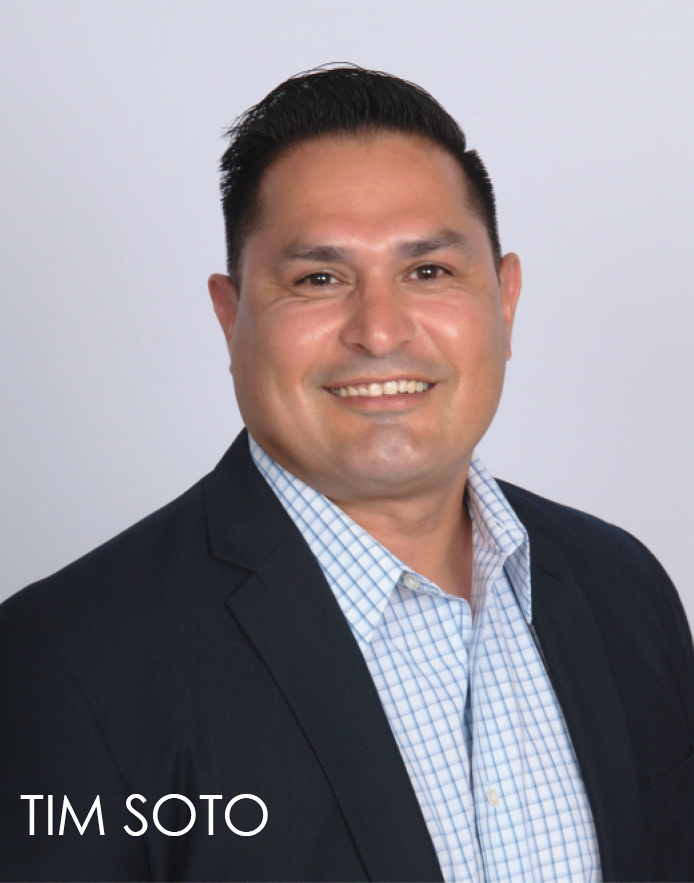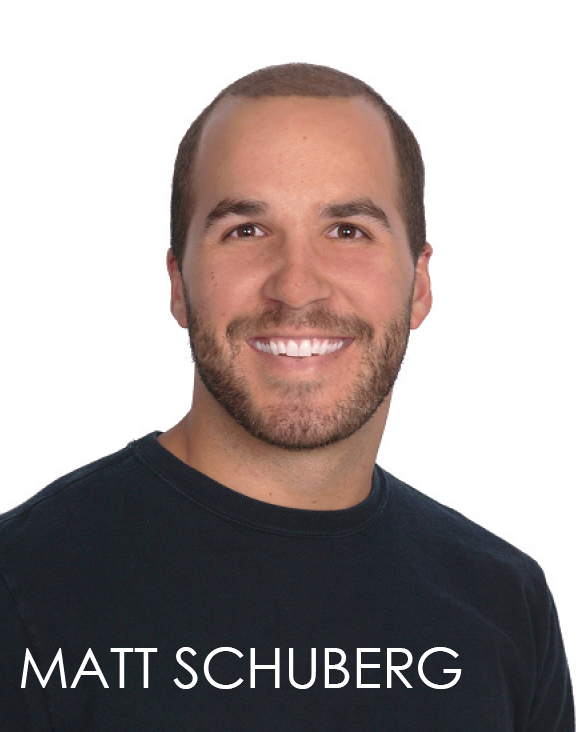By Dan Kryzanowski
Tips on Sponsorship and Syndicates
My Journey to Financial Independence
Who do I (or you) have more in common with, Joe Biden or Mitt Romney? Putting politics way aside on my response, my answer is both. Speaking with my business hat on, I morphed from Joe to Mitt.
The Early Days
While like Joe, I did grow up on the “mean streets” of Scranton, Pennsylvania. Actually, the streets were not so mean and life was wonderful as a child in the 20th century. I was also very fortunate that my parents had secure jobs – high school principal and social worker – with pensions in perpetuity!  Grit was (and is still) a valued trait in northeast Pennsylvania (aka NEPA), with NEPA known as coal mining community with strong cultural ties and traditions. There was a solid deference to top-down organizations and assumption of middle-class comfort. In terms of real estate and investments, the primary residence was the only “alternative” asset for the supermajority. This held true for the single-earner family or high-flying businessman that made six-figures in the early 80s. That said, the immigrant sense of adventure shined with the true immigrants (i.e. first-generation Americans) born in the early 1900s. My great aunts and uncles strongly valued family gatherings, so purchased land and built houses outside of town. My entrepreneurial spirit flickered early, though primarily in the “non-profit” sense, to provide opportunities for my peers. I co-founded and stood up programming for a youth leadership group under Hugh O’Brian Youth Leadership (HOBY), and served as matchmaker years before LinkedIn and Facebook. Overall, life was wonderful as a child and teenager in NEPA in the 20th century.
Grit was (and is still) a valued trait in northeast Pennsylvania (aka NEPA), with NEPA known as coal mining community with strong cultural ties and traditions. There was a solid deference to top-down organizations and assumption of middle-class comfort. In terms of real estate and investments, the primary residence was the only “alternative” asset for the supermajority. This held true for the single-earner family or high-flying businessman that made six-figures in the early 80s. That said, the immigrant sense of adventure shined with the true immigrants (i.e. first-generation Americans) born in the early 1900s. My great aunts and uncles strongly valued family gatherings, so purchased land and built houses outside of town. My entrepreneurial spirit flickered early, though primarily in the “non-profit” sense, to provide opportunities for my peers. I co-founded and stood up programming for a youth leadership group under Hugh O’Brian Youth Leadership (HOBY), and served as matchmaker years before LinkedIn and Facebook. Overall, life was wonderful as a child and teenager in NEPA in the 20th century.
Early Career
Sometimes it pays to be lucky, being in the right place at the right time with the right people. I spent college and my twenties studying and living in three countries (traveling to another 20), ten US states, and locations such as Martha’s Vineyard in the summer of 1998 to Austin, TX prior to the current (infinite?) population boom. I also picked up degrees at Wharton and Thunderbird and benefited immensely from a decade at Merrill Lynch and GE Capital.  Life was good and I quietly built up a sizable 401(k) and healthy Roth IRA. Stocks trended upward, public REITs paid double-digit dividends and I could receive a whopping 6% on a risk-free Certificate of Deposit (CD)! I felt very “diversified” and sophisticated within the comforts on the Fidelity online portal.
Life was good and I quietly built up a sizable 401(k) and healthy Roth IRA. Stocks trended upward, public REITs paid double-digit dividends and I could receive a whopping 6% on a risk-free Certificate of Deposit (CD)! I felt very “diversified” and sophisticated within the comforts on the Fidelity online portal.
Turning Point
While 9/11 was an obvious shock (I worked at 4 World Financial Center) and wake up call to potential horrors, day-to-day living (and investing) in the mid-2000s was quite comfortable. That, of course, all changed in September 2008. The curtain fell on the Wizard of Oz, and what was behind the curtain was not pretty (i.e. “trusted” institutions). Backing up a little bit, it should be noted that I rarely go against my gut feeling, and when I do it tends to put my entrepreneurial and investing endeavors on hold. Instead of remaining in Austin in mid-2008 to be at the forefront of the first true “organic” tequila, we ended up back in the northeast, paying $2,000 monthly for a condo with a view of a wall in Stamford, CT (when I literally could have bought a house in east Austin for $40K). Fast forward three winters, the reintroduction of state income tax, and dozens of pints for friends laid offer during the financial crisis – it was time to return “home” to Texas.
Keeping It Weird
 Austin, and Texas in general, has a very educated investor base, with folks forming all types of syndicates to invest in everything from conservative multifamily preferred loans to restaurants that cater to dogs and comedy tours (“Ha”, said my CPA, when we wrote off this investment). I immediately cannonballed into both ends of the pool, opening a Self-Directed IRA (SDIRA) to invest in high-yield/low-risk real estate and effectively crowdfund some of my dividends and piggybank savings accounts into hotel/bar/restaurants across Austin, some of which we also own the dirt. Overnight, I morphed from Joe to Mitt. Regardless of deal type, what struck me most was the commonality and comfort of each deal lead to sponsor a syndicate. In the early 2010s this was still a grassroots effort, now aided by various Meetups and crowdfunding platforms. The wild card, though, which has yet to scratch the surface is the “green tsunami” of $10T (yes, trillion) that individuals will shift from stagnant, nameless mutual funds to sponsors/syndicates, with a strong percentage of these funds going towards real estate.
Austin, and Texas in general, has a very educated investor base, with folks forming all types of syndicates to invest in everything from conservative multifamily preferred loans to restaurants that cater to dogs and comedy tours (“Ha”, said my CPA, when we wrote off this investment). I immediately cannonballed into both ends of the pool, opening a Self-Directed IRA (SDIRA) to invest in high-yield/low-risk real estate and effectively crowdfund some of my dividends and piggybank savings accounts into hotel/bar/restaurants across Austin, some of which we also own the dirt. Overnight, I morphed from Joe to Mitt. Regardless of deal type, what struck me most was the commonality and comfort of each deal lead to sponsor a syndicate. In the early 2010s this was still a grassroots effort, now aided by various Meetups and crowdfunding platforms. The wild card, though, which has yet to scratch the surface is the “green tsunami” of $10T (yes, trillion) that individuals will shift from stagnant, nameless mutual funds to sponsors/syndicates, with a strong percentage of these funds going towards real estate.
Storage, Baby!
 Raise your hand if you or somebody you know rents a storage unit. Raise your other hand if you would rather spend Memorial Day Weekend on your boat vs. changing storage providers if you monthly rate went up by a whopping $7. Now with both hands in the air (i.e. the universal “it’s good” on a PAT), you have a taste into the beauty of self-storage and natural attraction to invest in a storage facility with your friends and family. Pinnacle Storage Properties, founded by Uncle Bob’s veteran, John Manes, offers the simple blueprint on how to sponsor a deal. First, assuming you are liked – or of greater importance, respected – then you should have a natural following of 100+ interested individuals who will engage based on the high level of competency and character you exhibited throughout the years. Second, keep it simple. Unless a single person is willing to take all the equity off the table, then there should not be multiple share classes on your initial deals (or even on future deals or initial fund). Likewise, this eliminates the perception (and possible reality) of preferential treatment of your Grandma’s $50k on Day 1 vs. an ex co-worker funding the final $250k from her SDIRA. Finally, set parameters on commitments. Make it crystal clear that you need $X by Y date. That said, it is always best practice to communicate a “funds due date” a good 14-30 days before your true ‘D Day’, as is is very common for your next door neighbor’s check to get lost in the mail. Assume also that 10% of commitments will fall through, so either be oversubscribed or be prepared to front or possibly invest that final 10% of equity out of your own pocket.
Raise your hand if you or somebody you know rents a storage unit. Raise your other hand if you would rather spend Memorial Day Weekend on your boat vs. changing storage providers if you monthly rate went up by a whopping $7. Now with both hands in the air (i.e. the universal “it’s good” on a PAT), you have a taste into the beauty of self-storage and natural attraction to invest in a storage facility with your friends and family. Pinnacle Storage Properties, founded by Uncle Bob’s veteran, John Manes, offers the simple blueprint on how to sponsor a deal. First, assuming you are liked – or of greater importance, respected – then you should have a natural following of 100+ interested individuals who will engage based on the high level of competency and character you exhibited throughout the years. Second, keep it simple. Unless a single person is willing to take all the equity off the table, then there should not be multiple share classes on your initial deals (or even on future deals or initial fund). Likewise, this eliminates the perception (and possible reality) of preferential treatment of your Grandma’s $50k on Day 1 vs. an ex co-worker funding the final $250k from her SDIRA. Finally, set parameters on commitments. Make it crystal clear that you need $X by Y date. That said, it is always best practice to communicate a “funds due date” a good 14-30 days before your true ‘D Day’, as is is very common for your next door neighbor’s check to get lost in the mail. Assume also that 10% of commitments will fall through, so either be oversubscribed or be prepared to front or possibly invest that final 10% of equity out of your own pocket.
Six Figures in Six Minutes
 Did you know you can get 6 figures in 6 minutes? Yes, it’s true! As referenced above, assuming you have a reasonable number of potential investors (e.g. 100 or more), then a simple email or mention in your deal packet should bring you a few checks from your investors’ “forgotten trillions”. In every deal I sponsor, and even when I do not have a live deal, I always educate any potential investor that s/he may use their retirement dollars to invest in my upcoming deal. Tommy Prate of Magnify Capital is a longtime evangelist of enhanced retirement accounts (Solo 401(k), SDIRA), empowering both his investors and ‘Magnifiers’ (those sourcing deals with boots on the ground diligence) with the knowledge that they may invest in his current/next deal with their retirement accounts. Manes/Pinnacle also regularly receives 15%-25% of equity raise from Self-Directed accounts. The added bonus, and ease, of “selling” the concept of retirement accounts is that these dollars are likely locked up (i.e. cannot withdraw without early distribution penalty) for the next 5-25 years, so the investor has no urgency of receiving (~demanding) his principal back. Secondly, with a checkbook controlled SDIRA, the investor can easily reinvest dividends or have a bit of fun investing smaller checks in other real estate and private deals, while maintaining all the benefits of a traditional retirement account. Play this to your advantage, and you will literally get 6 figures for 6 minutes of your time.
Did you know you can get 6 figures in 6 minutes? Yes, it’s true! As referenced above, assuming you have a reasonable number of potential investors (e.g. 100 or more), then a simple email or mention in your deal packet should bring you a few checks from your investors’ “forgotten trillions”. In every deal I sponsor, and even when I do not have a live deal, I always educate any potential investor that s/he may use their retirement dollars to invest in my upcoming deal. Tommy Prate of Magnify Capital is a longtime evangelist of enhanced retirement accounts (Solo 401(k), SDIRA), empowering both his investors and ‘Magnifiers’ (those sourcing deals with boots on the ground diligence) with the knowledge that they may invest in his current/next deal with their retirement accounts. Manes/Pinnacle also regularly receives 15%-25% of equity raise from Self-Directed accounts. The added bonus, and ease, of “selling” the concept of retirement accounts is that these dollars are likely locked up (i.e. cannot withdraw without early distribution penalty) for the next 5-25 years, so the investor has no urgency of receiving (~demanding) his principal back. Secondly, with a checkbook controlled SDIRA, the investor can easily reinvest dividends or have a bit of fun investing smaller checks in other real estate and private deals, while maintaining all the benefits of a traditional retirement account. Play this to your advantage, and you will literally get 6 figures for 6 minutes of your time.
Playing the Mitt card to Financial Independence
When on the campaign trail in 2012, Mitt Romney was asked how his ROTH account could be in the Millions (actually $102,000,000!) when the maximum ROTH contribution was only $5,000? While Mitt took advantage of other types of enhanced retirement accounts (with 10x contribution limits), the takeaway here is that he invested via a post-tax account and will not have to pay taxes on this balance during his golden years. Stated differently, would you rather pay taxes today on a small seed or the full evergreen tree in the future? I opted for the former, now very confident that my seed will replicate many times over until I elect to take my first distributions in my 60s.

Dan Kryzanowski
Executive Vice President
Rocket Dollar
[email protected]
512.779.0843
Dan serves as EVP at Rocket Dollar and Capital Partner for Pinnacle Storage Properties. Dan has raised “six figures in six minutes” numerous times across the self-storage, multi-family, and residential worlds. His profession mission is to guide individuals to take back control of their retirement dollars and empower sponsors raise more money faster. Visit with Dan at Family Office Connect on May 21st in New York City.















